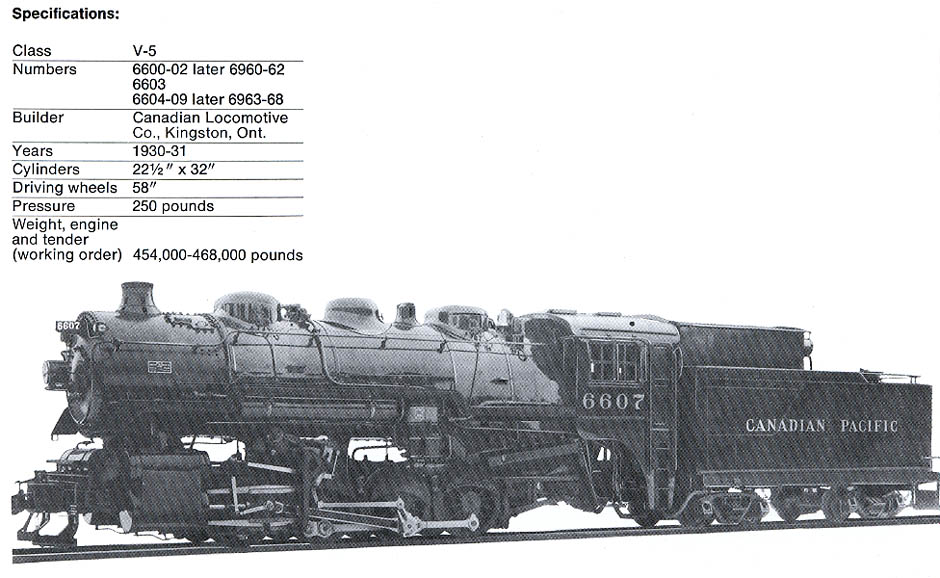by Omer Lavallee
Earlier in this series (
Collectors' Item No. 9 ), we dealt with
switchers or yard-engines. The leading characteristic of the steam yard
locomotive was the absence of leading or trailing trucks, thus making available all of the
locomotive's weight for adhesion, an essential feature where power was the criterion, rather
than speed.
The CP Rail network is far flung and, in steam days, comparatively few main lines carried a
sustained dense traffic, unlike some carriers in the United States. Consequently, most yard
duties were
|
fulfilled by the six-wheeled
switcher, developing less tan 30,000 pounds tractive effort, which formed the basis for this
type of power.
Shortly after the turn of the century, with the advent of larger road motive power, more
powerful switchers were needed in a few specific areas and to cope with seasonal
requirements. To meet this demand, the first 0-8-0 (later class V3) switcher
was produced in 1906. It developed slightly more than 40,000 pounds tractive effort, or
about 50% more than the standard contemporary 0-6-0. Thirteen more units of the
same class were built in the ensuing seven years.
|
A slightly more powerful
0-8-0, the V4, appeared in 1928 and 1929 as the result of conversion of thirty
2-8-0 types to yard engines.
Final version of the eight-wheeled switcher, the V5, which is the photo subject
in this instalment, was constructed by the Canadian Locomotive Company in 1930 and 1931. The
nine locomotives of this class, provided with large boilers utilizing 250 pounds pressure,
developed almost 60,000 pounds of tractive effort. They were to be found in larger system
yards such as Calgary, Winnipeg, Fort William and Montreal.
|

